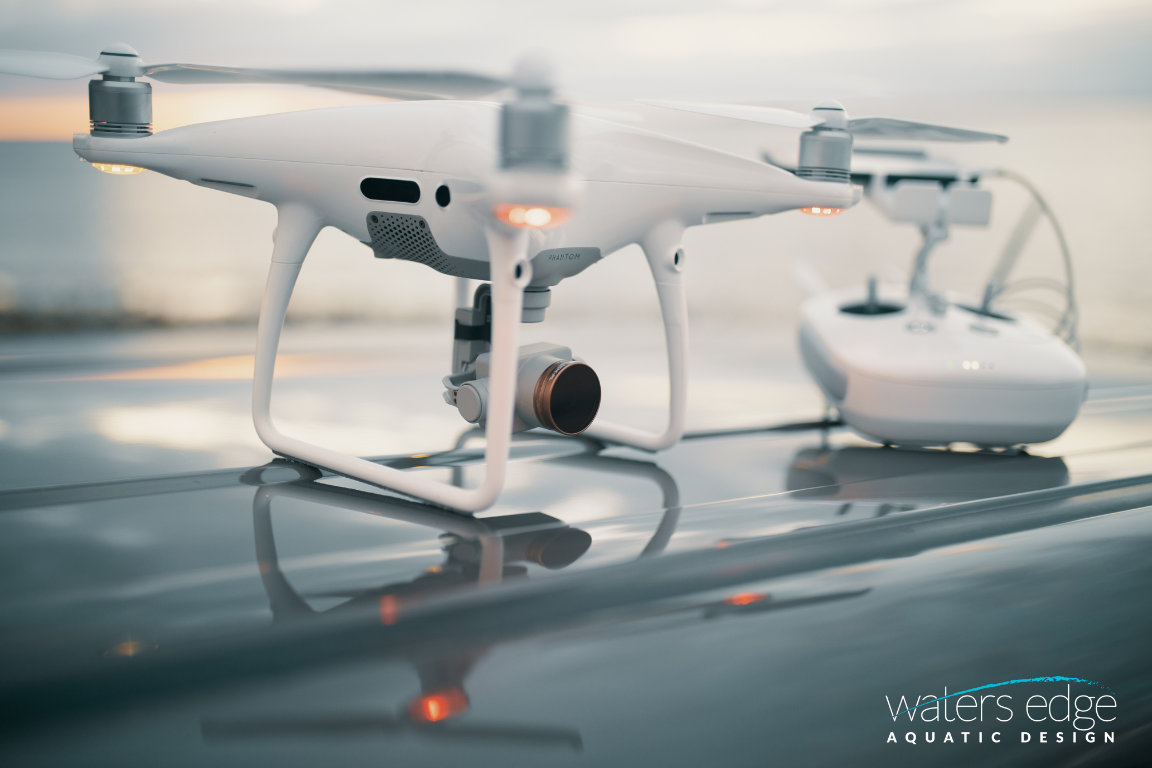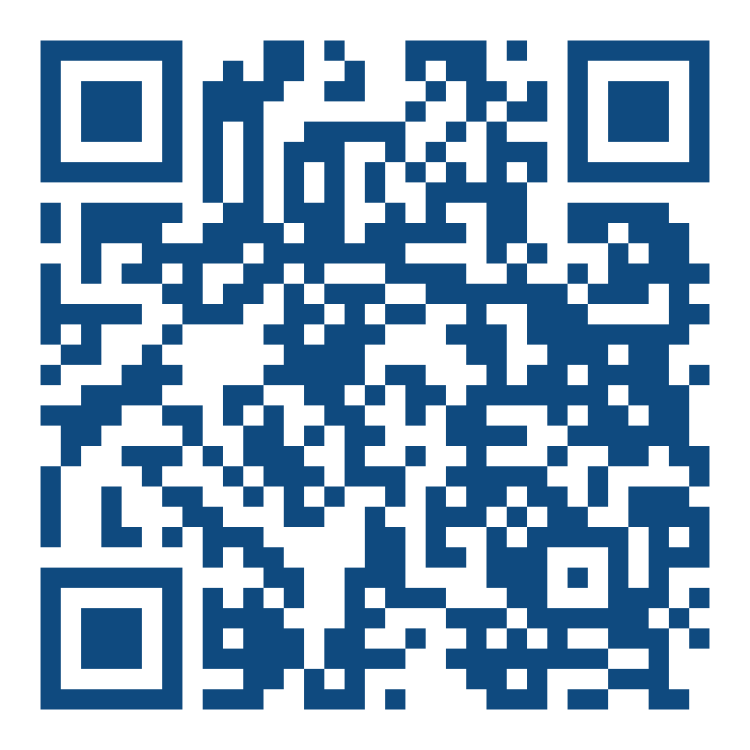
As technology continues to evolve, the aquatics industry is embracing these transformative tools. From the initial stages of conceptual design to staff training and marketing, these technologies help optimize equipment efficiencies, simplify processes, improve safety, and deliver better results for both clients and community members.
At Waters Edge Aquatic Design, we have seen firsthand how these innovations make a difference. Incorporating tools such as digital facility mapping through Matterport®, QR-based training, 3D modeling, and drones into our workflow enhances efficiency and communication, while also reducing long-term operational issues.
Matterport®: Creating a Digital Twin of Your Facility
One of the most exciting modern advancements Waters Edge utilizes is a 3D scanning and imaging platform called Matterport®, which creates detailed digital replicas of physical spaces. Using a specialized camera system, Matterport® scans an entire aquatic facility to produce a fully navigable virtual model.
This ‘digital twin’ serves multiple purposes. One of the main benefits is the ability for facility planners and engineers to optimize the design. A completed scan allows our designers and engineers to gather near-infinite dimensional information, declutter space currently in use, and remotely guide facility owners through virtual tours. Additionally, Matterport® enables users to tag essential features, such as filters, pumps, or controllers, with labels, videos, and maintenance notes. The scan can be exported into computer design software, like Revit , for future renovation planning. It’s also excellent for marketing, offering potential visitors or stakeholders a virtual tour of your facility from their desktop or through a virtual reality (VR) headset for a more immersive walkthrough.
Whether it’s aiding construction teams with site orientation or helping municipalities share capital improvement projects with the public, Matterport® allows Waters Edge to provide greater clarity at every stage of a project’s lifecycle.
Bridging Design and Engineering with 3D Modeling
Behind the scenes, 3D modeling remains one of the most valuable tools for the Waters Edge design team. Using programs like AutoCAD, Revit, and Civil 3D, we create detailed models of pools, decks, bathhouses, buildings, and mechanical systems. These models help connect architecture and engineering, reducing design conflicts during construction.
A 3D model also enables us to run simulations—checking water flow, load bearing, or even sun and shade patterns—to ensure every element of a design is efficient, code-compliant, and user-friendly. During construction, these models assist contractors and subcontractors, removing guesswork and reducing delays.
Throughout the design process, VR combined with 3D renderings offers a detailed view of a project that drawings and images alone cannot provide. VR presents a space as an interactive environment. This is especially useful in mechanical spaces, as it allows users to see how pumps can be accessed and how valves should be operated.
Drones: A New Perspective on Site Planning and Inspections
Unmanned Aerial Vehicles (UAVs), more commonly known as drones, are another game-changer in aquatic design, construction, and operations. By capturing aerial photos and videos of existing sites, drones help us better understand topography, surrounding infrastructure, and spatial constraints early in the design process.
Select team members at Waters Edge who hold a small unmanned aircraft system (SUAS) commercial license issued by the Federal Aviation Administration (FAA) capture high-quality drone footage for our clients while ensuring compliance with federal and state regulations.
During construction, drone flyovers provide real-time documentation, enabling us to monitor progress and identify issues early on, thereby avoiding costly mistakes. For clients, these visuals also give a distinctive view of the project, which is helpful for public presentations or social media updates.
Operationally, drones can assist with roof inspections, facility assessments, or even emergency planning. It’s a safer, faster, and more cost-effective way to gather vital visual data, providing a comprehensive overview of potential areas of need.
Drone videos and photography offer unique perspectives of a facility that are vital for marketing purposes. Potential guests get a bird’s-eye view of the facility, providing them with an at-a-glance overview of the site’s amenities. With new commercially licensed drone pilots entering the field at a rapid rate, aerial photography is becoming increasingly accessible for stakeholders and communities to highlight their projects.
Innovative Marketing Tools: Highlighting What Sets You Apart
Once a project is finished, modern tools help our clients share their story. VR tours, drone footage, and Matterport® walkthroughs all produce engaging content for marketing, whether clients are promoting a new facility, seeking sponsorships, facilitating stakeholder partnerships, or aiming to increase membership.
High-quality visual storytelling makes a difference. Even something as simple as a QR code on a brochure linking to a virtual tour can boost engagement and generate excitement in the community. At Waters Edge, we’re always looking for ways, big or small, to enhance our clients’ marketability to give them a competitive advantage.
Social media platforms like Instagram, Facebook, YouTube, and TikTok have become essential channels for promoting aquatic facilities and programs. Engaging content, such as virtual walkthroughs or drone footage, performs exceptionally well on these platforms. Visually appealing images and videos tend to generate higher engagement, making them valuable tools for boosting community awareness and enthusiasm for aquatics projects.
Streamlining Training Processes Using Modern Technology
Hands-on training is essential for safely managing any aquatic facility. Relying solely on printed manuals or in-person shadowing can lead to inconsistent knowledge, especially with seasonal or part-time staff. That’s where QR code-based learning comes in.
Facility staff can easily access mobile-friendly videos, diagrams, or step-by-step instructions through QR codes placed near key equipment, such as backwash valves, skimmers, or chemical controllers. This allows team members to learn or refresh their knowledge directly at the point of need via their smartphone or laptop.
This learning format enhances training efficiency and retention while providing standard guidelines for each user. It also lessens the burden on experienced staff who would otherwise spend valuable time guiding new hires through repetitive tasks.
Another tool gaining popularity for training in the aquatics industry is VR. Organizations like the American Red Cross® utilize VR to enhance lifeguard training. The innovative Red Cross Lifeguard VR app helps guards-in-training develop their surveillance and scanning skills. The app immerses users in realistic drowning scenarios, providing lifeguards with a safe and modern way to practice handling different critical situations.

Here’s an example of a QR code placed near equipment. When scanned, staff are redirected to a YouTube training video detailing how to backwash a pool filter. This provides a hassle-free, on-the-spot tutorial that staff can refer to whenever they need a refresher.
Technology That Works for You
At Waters Edge, we believe that embracing technology isn’t just about following trends but about providing better results for our clients and the communities they serve. These tools help reduce misunderstandings, maximize design efficiencies, enhance training, and ensure that every facility we work on is safe, functional, and built to last.
As technology continues to evolve, we will continue to search for new ways to utilize it, from initial concept renderings to grand openings and beyond. Whether you’re planning a new aquatic facility, renovating an existing one, or aiming to improve your staff’s training and operations, we’re here to help you navigate the next wave of aquatic design.
